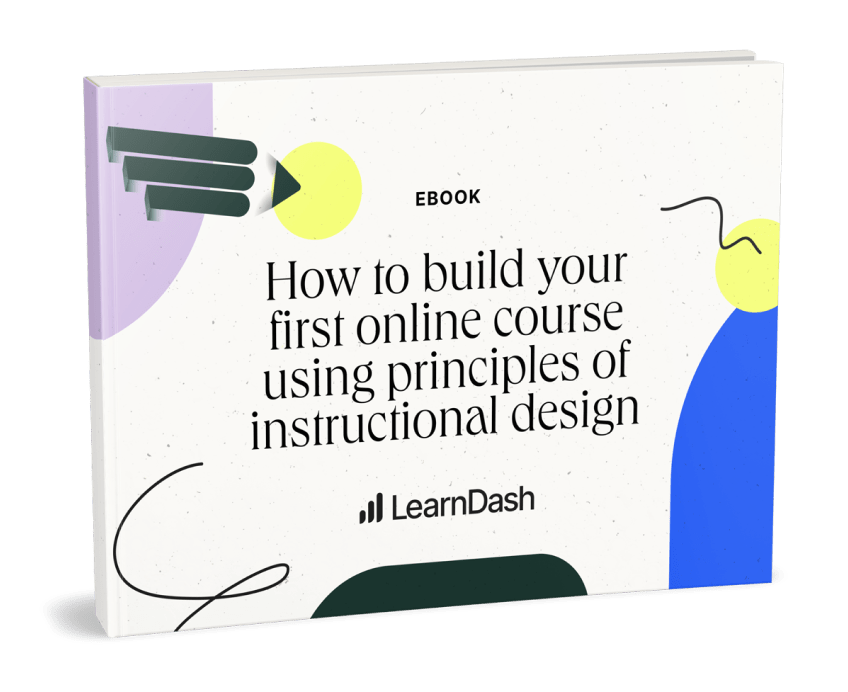
What to Look for in a Course Builder Platform
If you’re looking to build a course online, how do you decide which is the best online course builder to use? You’re probably looking for a platform that’s designed to help you easily and quickly build stellar courses without needing years of coding experience.
Choosing a course platform can be challenging, especially considering all the options available in an already saturated online market. Here’s what we think you should look for in an online course builder platform:
- Ease of use
- An engaging learning experience
- Clear pricing plans
- Integration with tools you already use
- Flexible payment options for your learners
Let’s break down each of these components below.
Easy-to-Use Course Builder
Aim for an online course software with a straightforward built-in editor that’s intuitive to use and scale. It should be easy for you as the creator to immediately understand how your content will appear to your students. You should also feel confident enough to explore and play around with course tools to keep growing your skills as a course designer.
With LearnDash, you can use the Drag and Drop Course Builder to organize your course into sections, lessons, and topics. We’ll show you how the LearnDash Course Builder works in the video below:
An Engaging Learning Experience
The goal of every course is to create a transformation within your learners. Keep your learner engaged and motivated, and a transformation should happen naturally.
You should look for the following features to help promote engagement:
- Drip Content. This is the ability to release content on a schedule to keep users coming back.
- Video Progression. Make sure your videos can be viewed easily and are not skippable.
- Gamification. A recent study revealed that gamification led to 14% higher assessment scores. Gamifying can be as simple as adding a points system or giving out badges and awards as learners complete a lesson or a set milestone.
- Assignments. Giving assignments at the end of each lesson helps keep the students motivated through receiving direct feedback and trackable grades.
- Quizzes. A well-thought-out quiz gives the learner an opportunity to test their skills as well as a way for you to evaluate student progress and engagement.
- Analytics. Analytics help break down which students are performing well and who might need a little more help. This can also lead to improvements in your content for future courses.
- Discussions. Community building is an important part of online learning. Having a forum or discussion board will enable learners to share ideas and tips and congratulate each other for their achievements.
Clear Pricing Plans for Creators
Depending on the course-building platform, the cost of building and hosting your course can eat into your profits.
If you’re building on a SaaS platform, it may be simpler to get started, but perhaps at a higher cost. In addition, you don’t own your course, and you’re limited to the features of the SaaS plan. A self-hosted course builder certainly has more of a learning curve and is more DIY. Plus, you’ll have to think about your own hosting, which can be another cost. However, you’ll have complete ownership and control.
Look for a platform that offers a transparent pricing strategy right away. Most online course platforms offer multiple pricing options, depending on creators’ needs. Look for a fixed monthly or annual fee that doesn’t charge commissions and transaction fees. This way once you’ve gotten a few sales to cover your platform costs, the rest is yours, instead of having to consistently lose a percentage of your sales as you grow.
LearnDash offers a flexible approach with LearnDash Cloud. You’ll receive the full customization capabilities of WordPress, with the hosting, plugins, and themes you need to launch a course right away.
Integration with Tools You Already Use
You’re likely already using an email autoresponder to communicate with your audience. Or maybe you’ve become accustomed to applications like Zoom, Slack, Zapier, Convertkit, and others. When you’re using tools that you’re familiar with, it makes it easier to build a more comprehensive program.
It’s a good idea to review the integrations page of a course-building platform before taking the plunge. Ensure the platform is flexible enough to allow integrating third-party tools of your choosing.
Flexible Payment Options for Your Learners
Having flexible payment options to offer learners like one-time payments, installments, and subscriptions can increase the number of course signups.
Also, having multiple payment gateway options such as PayPal, Stripe, or WooCommerce makes it easy to get paid via your preferred payment method.
You might want to set different pricing strategies for your online courses. For instance, you could decide to sell your program for a one-time price or with monthly payments. When selecting a platform to host your online program, check if they offer the possibility of choosing between different pricing plans to set for your students.
Avoid Analysis Paralysis with LearnDash
LearnDash has both a plugin and a cloud solution to help build your next course. LearnDash offers the best of both worlds: self-hosted flexibility with the option to go the fully-hosted route so you can focus on building and marketing your course.
Try out our course-building tools, like the drag-and-drop course builder, in our course creator demo experience.

Rachel Kolman
@LearnDashLMS







